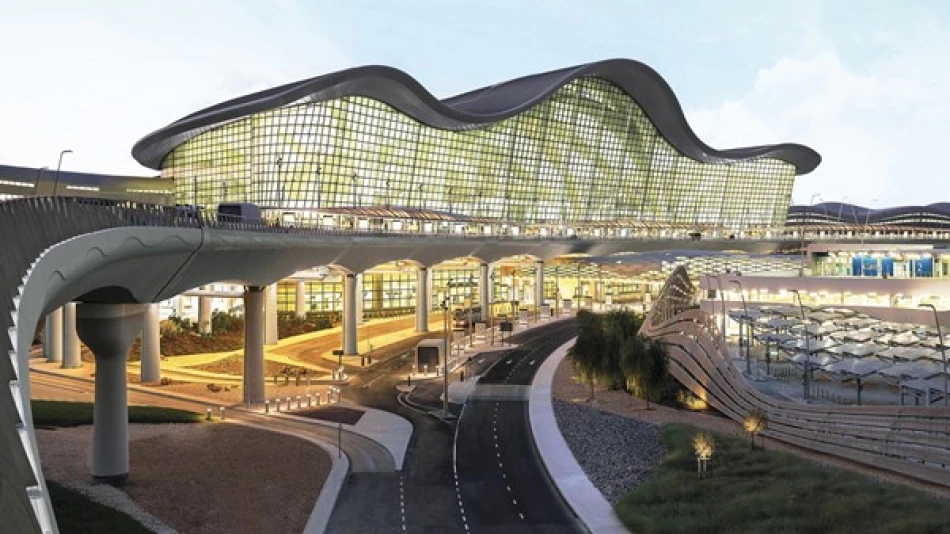
Soaring Passenger Volumes at UAE Airports: A Remarkable Surge in Travel
UAE Airports Cement Global Hub Status with Record 71 Million Passengers in First Half of 2025
The UAE's aviation sector is firing on all cylinders, with the country's major airports handling a record-breaking 71 million passengers in the first six months of 2025—a 6% jump that underscores the Emirates' growing dominance as a global travel nexus. This surge, driven by aggressive route expansion and strategic airline partnerships, positions the UAE to challenge traditional aviation powerhouses while capitalizing on the post-pandemic travel boom.
Dubai International Maintains Crown Despite Regional Headwinds
Dubai International Airport, the world's busiest hub for international passengers, processed 46 million travelers in the first half of 2025, marking a 2.3% increase despite significant regional disruptions. The airport achieved its highest-ever first-half passenger count, demonstrating remarkable resilience during May and June when regional airspace faced temporary restrictions due to geopolitical tensions.
The facility's operational excellence shines through in its baggage handling metrics: 91% of the 41.8 million bags processed were delivered within 45 minutes of arrival, with only two delayed bags per 1,000 passengers—significantly outperforming the global average of 6.3 bags per 1,000 passengers recorded in 2024.
Network Expansion Drives Growth
Dubai International now connects to over 269 destinations across 107 countries, with January 2025 setting a new monthly record of 8.5 million passengers. The airport's daily average of 254,000 passengers reflects the sustained demand for Dubai as both a destination and transit point, particularly as business travel rebounds and leisure tourism reaches new peaks.
Abu Dhabi's Zayed International Emerges as Growth Champion
Abu Dhabi's airport system delivered the most impressive growth story, with Zayed International Airport welcoming 15.5 million passengers—a robust 13.2% year-over-year increase. This performance significantly outpaced both Dubai and Sharjah, signaling Abu Dhabi's successful strategy to diversify away from oil dependency through aviation and tourism.
The emirate's aggressive route development paid dividends, adding 16 new destinations and attracting carriers like China Eastern Airlines, which launched four-weekly Shanghai flights set to become daily in September. Indian low-cost giant IndiGo also expanded its Abu Dhabi operations, making Zayed International its primary UAE gateway with new routes to Madurai, Bhubaneswar, and Visakhapatnam.
Sharjah's Double-Digit Surge Reflects Regional Aviation Boom
Sharjah International Airport recorded 9.1 million passengers, a solid 10% increase that demonstrates the broader strength of UAE aviation beyond the two major hubs. The airport's cargo operations grew 6.36% to 102,427 tons, highlighting its role in the UAE's logistics and trade ecosystem.
This performance mirrors trends seen in other regional aviation hubs like Qatar's Hamad International and Saudi Arabia's expanding airport network, as Gulf states compete for transit traffic between Europe, Asia, and Africa.
Strategic Implications for Global Aviation
The UAE's aviation success comes at a critical juncture for the global industry. While European airports struggle with capacity constraints and U.S. hubs face infrastructure challenges, the UAE's continued investment in airport expansion and airline fleet growth positions it to capture an even larger share of international traffic.
The General Civil Aviation Authority projects UAE airports will handle 159 million passengers in 2025, up from 147.8 million in 2024. This trajectory puts the UAE on track to cement its position as the world's fourth-largest aviation market by passenger volume, behind only the United States, China, and the United Kingdom.
Economic Multiplier Effects
Each percentage point of passenger growth translates to significant economic impact, with aviation contributing approximately 15% of Dubai's GDP and increasingly important shares in Abu Dhabi and Sharjah. The sector's expansion supports the UAE's broader economic diversification goals while generating employment across hospitality, retail, and logistics sectors.
For investors, the sustained growth validates the UAE's massive infrastructure investments, from Dubai's Al Maktoum International expansion plans to Abu Dhabi's ongoing terminal developments. These projects position the country to handle projected passenger volumes exceeding 200 million annually by 2030.
 Layla Al Mansoori
Layla Al Mansoori







